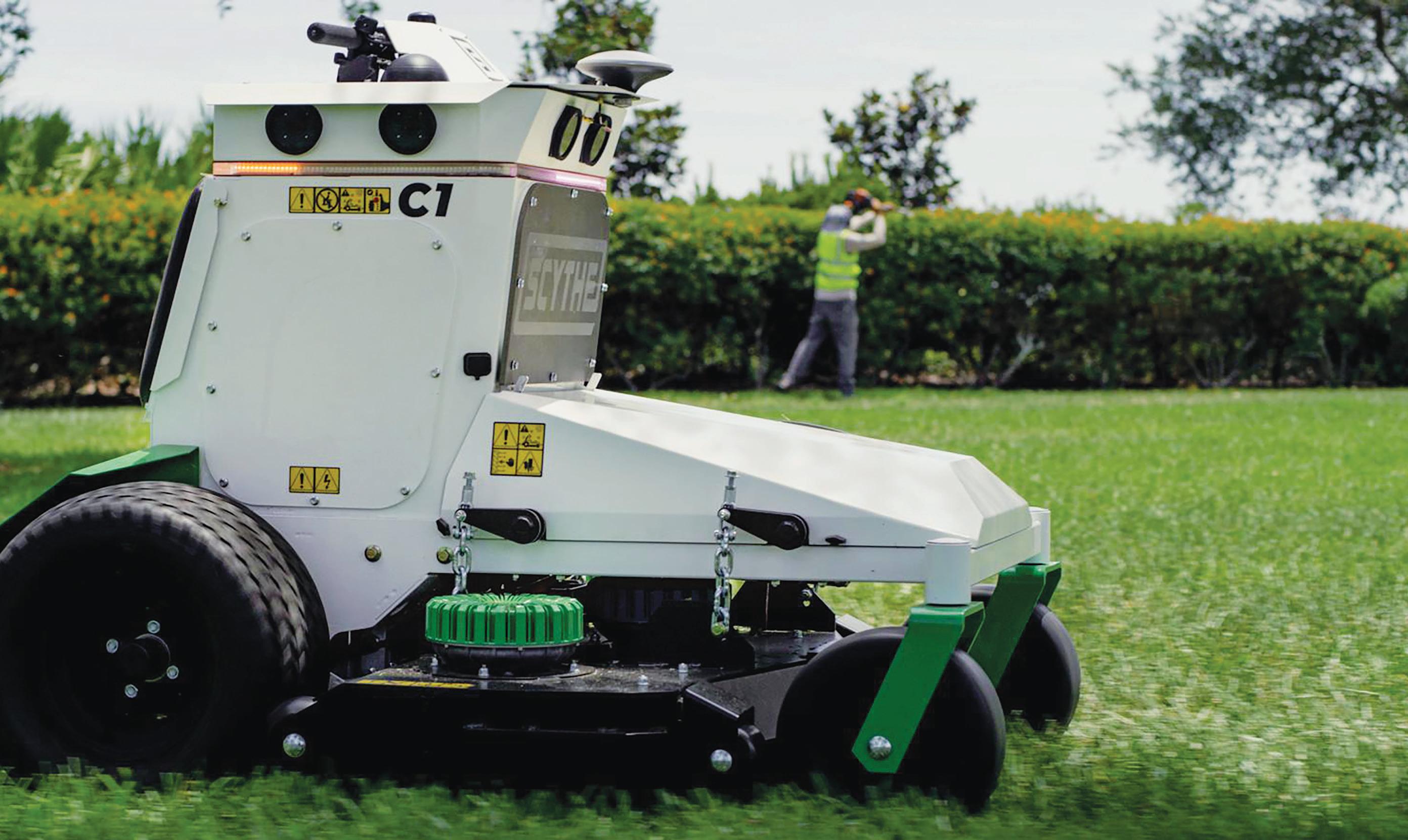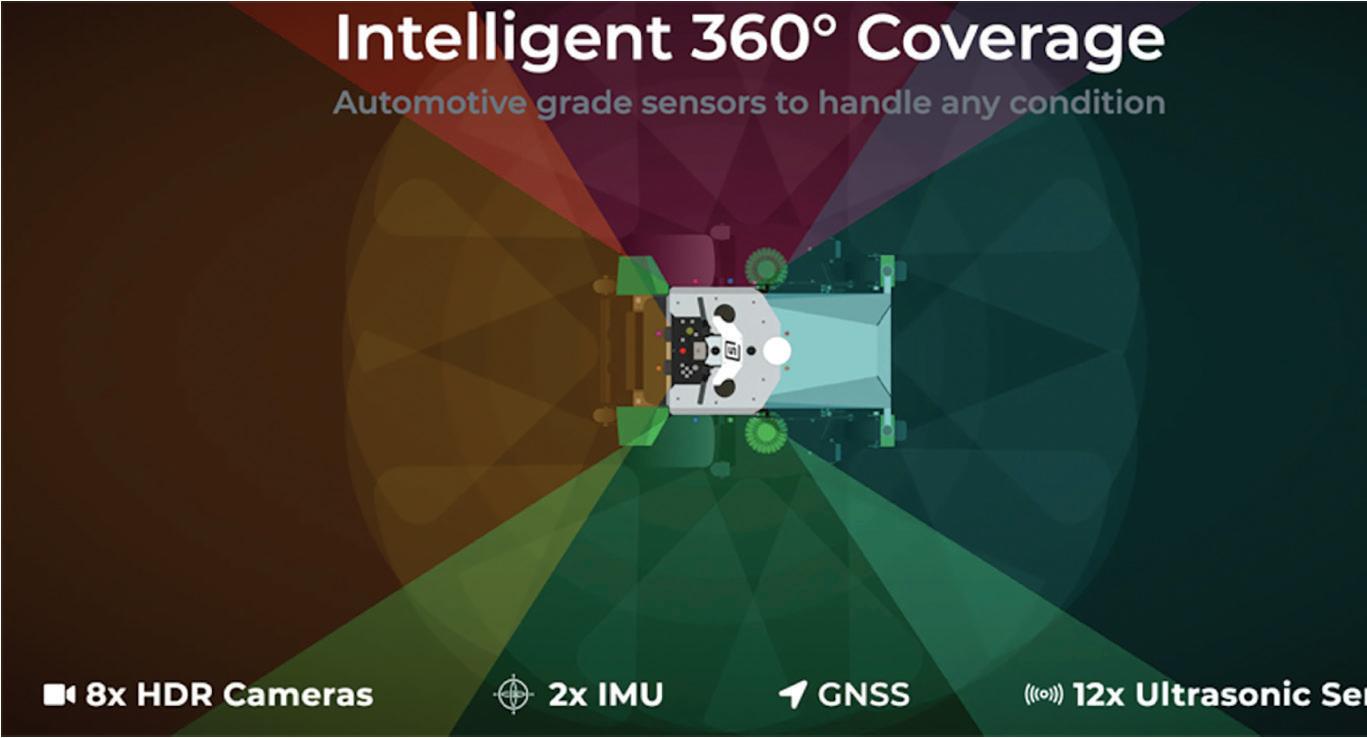
5 minute read
3 tips to developing outdoor robots for unstructured environments
Design & Development
outdoor robots for tips to developing unstructured environments3environments
Scythe Robotics shares tips about sensor selection, ruggedized
hardware, and software optimization for its commercial mowers.
Jack Morrison • Co-Founder, Scythe Robotics
Every roboticist has heard about the three Ds: dull, dirty and dangerous tasks we’d be better off having robots do for us. Across off -road industries like landscaping, agriculture and forestry, people have to perform repetitive work in incredibly uncomfortable conditions, o en with the risk of dangerous accidents. Faced with additional challenges om worker recruitment and retention to worker safety and e ciency, these industries present huge opportunities for robotics. From landscape maintenance today to trash pickup and forest fi re mitigation tomorrow, autonomous outdoor robots can help humanity take far better care of the environment. But building robots to complete tasks like these in unstructured, off -road environments presents design challenges diff erent om those encountered in structured environments like warehouses and factories and on-road environments like streets and sidewalks. At Scythe Robotics, we are building autonomous solutions for off -road environments, focusing fi rst on a self-driving mower for commercial landscaping – an all-electric, zeroemission solution for businesses on the ontline of green space management. Commercial landscaping, an enormous $105 billion industry, is fi lled with dull, dirty and dangerous challenges. It also faces labor shortages that are straining businesses and hamstringing growth. There are three keys to designing our mowers that we’ll share for developing robots to tackle the complexities of unstructured, off -road environments.
Scythe Robotics is developing an all-electric, fully autonomous mower for commercial landscapers.
| Scythe Robotics
1Different jobs require different machines Our robots must be incredibly rugged to be successful in the landscaping environment. They maneuver over rough ground, mow under the blazing sun in high temperatures, and have to operate without allowing any ingress from grass, dust, or downpours. It’s often cost-prohibitive to design a machine that’s ideal for all scenarios, so you have to deeply understand your potential operating conditions as a part of the requirements.
And unlike typically flat and relatively predictable indoor environments, a general-purpose robotic platform won’t cut it off-road. The variety of requirements for off-road tasks means hardware choices must be made based on factors such as traction, stability, speed and weight distribution. Designing the hardware for our off-road mowers, we considered things like what terrain we needed to cover, how gentle we needed to be on the turf to avoid tearing up grass, and how steep of a hill we’d need to climb. Even two mowers, for example a general commercial mower and a specialty golf course fairway mower, can have wildly different requirements.
2Dynamic perception challenges inform sensor selection Creating an autonomous robot that can go back and forth in straight lines is table stakes for mowing. The real challenge for mowing autonomy is operating safely in a dynamic, unstructured environment. Persistent, high-def 3D mapping like what’s often used in on-road driving isn’t nearly as effective thanks to the ever-changing nature of outdoor landscapes. So highly detailed, real-time live perception is a must-have.
Our machines have eight high-dynamic-range (HDR) cameras that can see under any circumstances. Typical machine vision cameras with 60dB range are insufficient for the stark lighting differences between shadows and direct
Design & Development

A diverse sensor array helps Scythe’s robot
mowers navigate o -road environments.
| Scythe Robotics
sunlight - a equent occurrence off road. The ruggedness of the environment must also inform sensor selection. Sensors must work in all possible operating conditions. And detection for fouled sensors, like a mud-covered camera, needs to be built in. We chose ultrasonic sensors as a secondary sensing layer precisely because they work robustly in so many conditions and complement the detail of cameras well.
3Optimize so ware processing to match the task Off -road applications can be incredibly power intensive, whether it’s spinning mowing blades at 4000rpm or hauling heavy loads up steep grades. O entimes there is limited ability to charge nearby, which can be challenging for emissions ee, fully-electric machines. This forces power savings in other possible areas, such as compute capabilities. Instead of packing bee desktop GPUs, off road mobile robots must make do with substantially lower power devices. The limited available compute means the so ware must be heavily optimized for performance, as well as reliability. Fast response times, in the sub-100ms range, om perception to action are crucial for safe operation in ever-changing environments. This makes some choices of robotic so ware tooling, like the Python language, unsuitable for these environments. We lean heavily on the highly-performant Rust programming language because it gives us speed without sacrifi cing safety and reliability. O entimes, so ware for robots needs to take advantage of the unique constraints available. For instance, unlike on-road operations where simply coming to a rapid stop can be dangerous, many off -road autonomous applications allow for simpler safety fallback behaviors. In mowing, we can simply brake the machine and stop the blades if the system is at all unsure about its ability to operate safely. This is a huge advantage, allowing us to be more conservative in our safety parameters and deploy machines early on, without waiting for perfection. Looking ahead, we believe we are at a tipping point where businesses with dull, dirty and dangerous jobs will face increasingly severe labor shortages. But their work is o en critical for taking care of our environment and producing many of our most important goods. Automation can off er many transformative solutions to enable businesses to grow while nurturing the planet. Scythe mowers are at the fore ont of this movement with machines in the fi eld today. Similar large opportunities exist across many other off road industries, too, for new innovators to step up and tackle. RR
About the Author
Jack Morrison is the co-founder & CEO of Scythe Robotics, a Boulder, Colo.-based startup developing autonomous outdoor robots for off -road environments. Prior to founding Scythe, Morrison spent three years at Occipital as a computer vision engineer. He received a B.A. in computer science om Bowdoin College in 2011.





